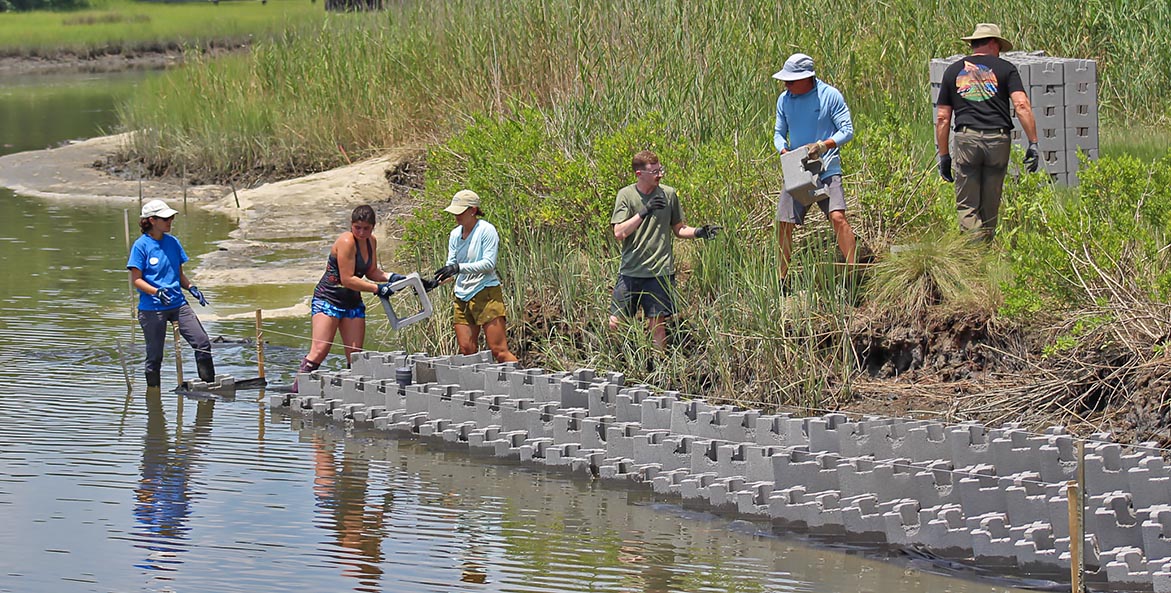“A polluted, degraded environment—or a healthy one—impacts more than plants and animals,” writes Carmera Thomas-Wilhite. “It also shapes who we are as people and as communities. It can influence how we interact with and care for the world around us.” With more than 18 million people living in the Chesapeake Bay watershed, humans are undoubtedly part of the ecosystem—so how do we care for both? This month, Thomas-Wilhite, CBF’s Vice President for Diversity, Equity, Inclusion, and Justice, explains what it means to center people in conservation. When we do, it not only moves watershed restoration forward, but also builds community—as 90 volunteers who installed a living shoreline over 10 weeks in Portsmouth, Virginia found this summer. In Baltimore and Prince George’s County, Maryland, work to support small and urban farmers is also helping to build local food systems that are critical for community and environmental health. Along the Nansemond River, oyster restoration is one pathway the Nansemond Indian Nation is using to rebuild connections to their ancestral waterway. And for nearly two decades, CBF’s VoiCeS program has inspired hundreds of dedicated volunteers across the watershed to act through service projects and local advocacy of all shapes and forms—creating a better place for people and all of the 3,600 species who share the Bay watershed. Also, in the news this month, a settlement was reached to begin remedying pollution at Baltimore’s wastewater treatment plants, restoration is ramping up in Pennsylvania’s Halfmoon and Pequea watersheds, several advocacy opportunities kick up in Virginia ahead of legislative session, and more.
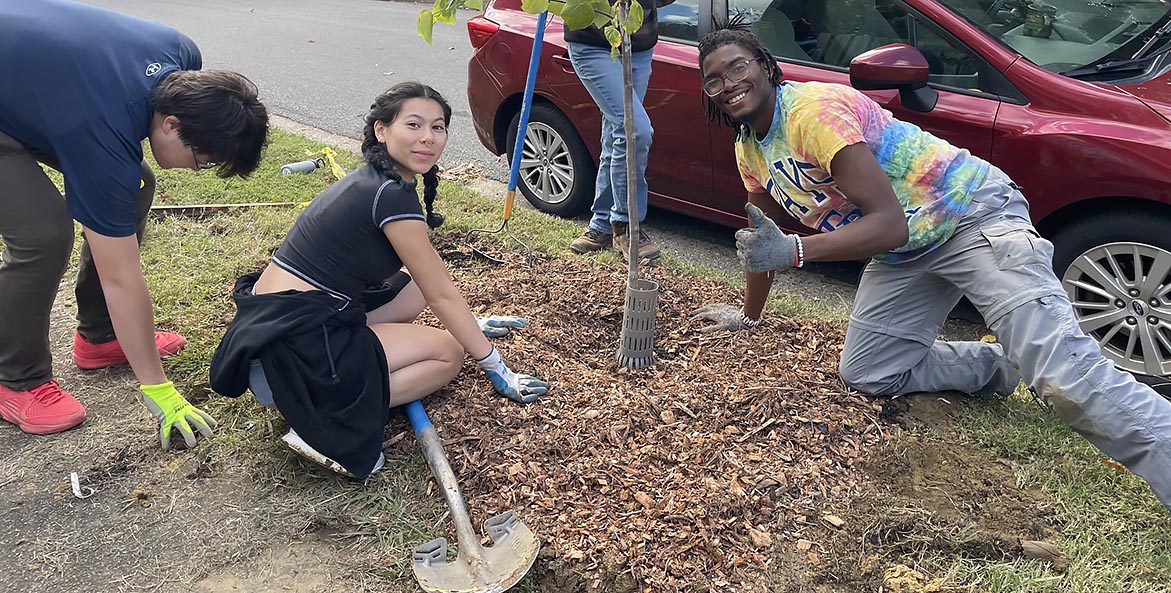
Volunteers came out to plant trees in Virginia's Oak Grove neighborhood to cool its streets.
Daniel Klein
A Place for People
More than 18 million people live in the Chesapeake Bay watershed from all types of backgrounds. Creating a truly sustainable ecosystem has to include everyone, writes Carmera Thomas-Wilhite, CBF’s Vice President for Diversity, Equity, Inclusion, and Justice. Pollution shapes both human and ecological communities, and conservation needs to take both into account to succeed.
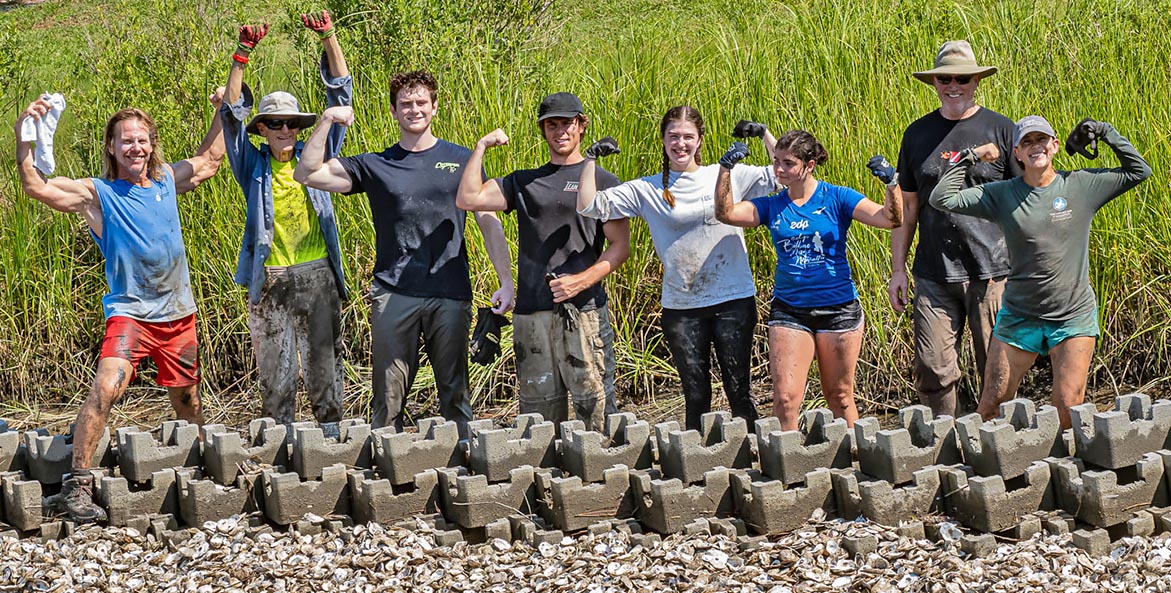
A muddy group of volunteers celebrate progress on a living shoreline project in Portsmouth, Virginia.
Sue Mangan
Bringing Shorelines to Life
What happens when dozens of people volunteer together one summer to restore a tidal shoreline? They not only help save the Bay—they end up creating community. That’s what happened in Portsmouth, Virginia this summer as 90 volunteers installed a 718-foot living shoreline over the course of 10 weeks, building up oyster reefs and marshes along the waterfront.
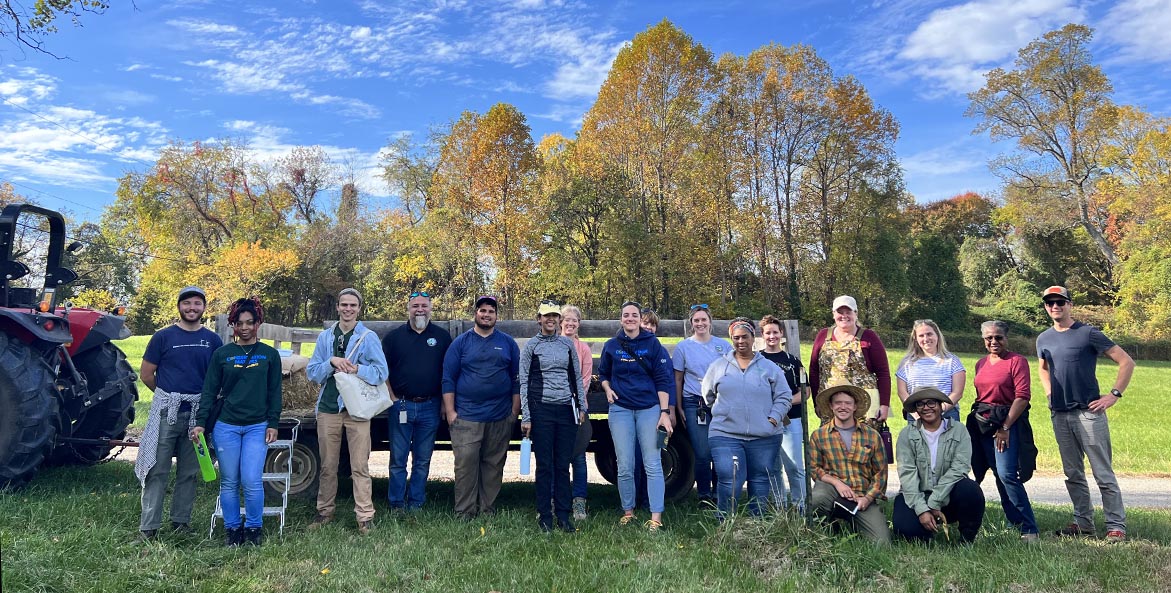
Farmers gathered with staff from CBF, the Maryland Department of Agriculture, and the Natural Resources Conservation Service at CBF's Clagett Farm in Upper Marlboro, Maryland for a cover crop workshop. Isabella Bruno, CBF's Maryland Agriculture Equity Project Coordinator, hosts such workshops as part of her outreach work to farmers who have long been underserved by federal and state agricultural programs, which include small, urban, beginning, military veteran, and BIPOC (Black,Indigenous, and people of color) farmers.
Isabella Bruno/CBF Staff
Farming in the City
Small and urban farms have an outsized impact on their communities and are a critical part of building local food systems that support people and the health of waterways. Isabella Bruno, CBF’s Agriculture Equity Project Coordinator in Maryland, is working to directly reach farmers who have long been overlooked by federal conservation programs in an effort to expand access.
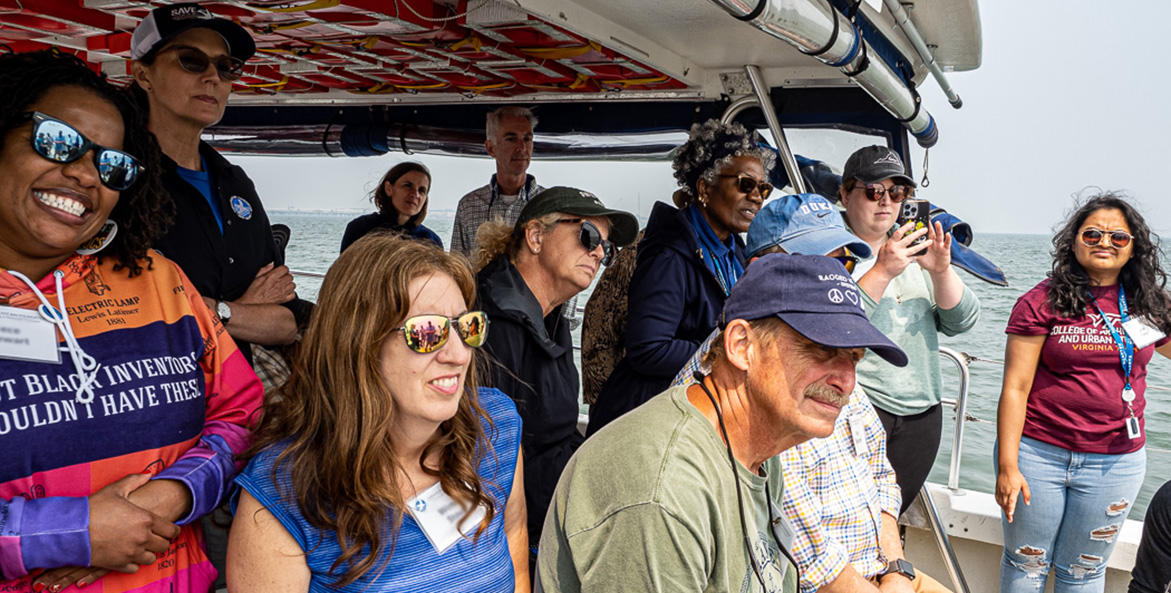
Participants in CBF's Volunteers as Chesapeake Stewards (VoiCeS) program learn about the Bay and how to play a personal role in restoration and advocacy.
Sue Mangan
The Bay’s Voice
For nearly two decades, CBF’s VoiCeS program has inspired hundreds of dedicated volunteers to serve their community and the Bay. As we near the program’s 20th anniversary, alumni share their experiences, projects, and how the courses have inspired them to take action in myriad ways—from creating fashion out of plastic to telling the Bay’s story through photographs.
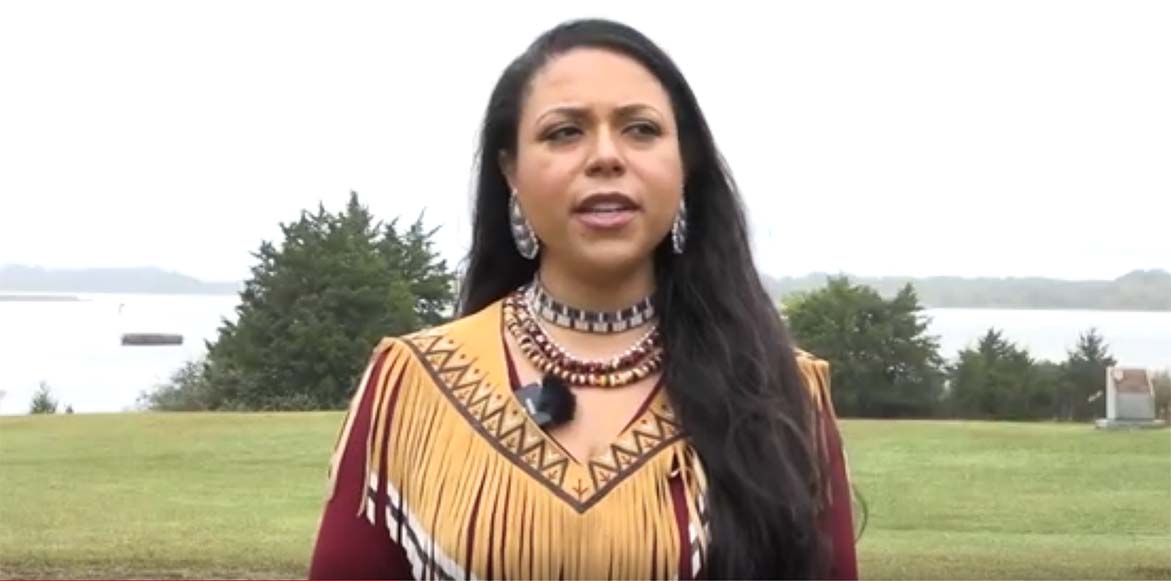
VIDEO: Oyster Connections
After centuries of displacement, the Nansemond Indian Nation is rebuilding connections to their ancestral waterway in southeastern Virginia, in part through oyster restoration. Hear about their work to raise oysters and bring the river back to life in this video.
In the News
- Settlement reached over Baltimore City wastewater treatment plants: The $4.75 million settlement payment is the first step in addressing pollution to the Bay.
- Impaired waters increase in Pennsylvania: 28,820 miles of waterways in the Commonwealth have been damaged by pollution, according to the latest state report.
- Restoration work accelerates in Halfmoon and Pequea Watersheds: The Halfmoon and Pequea Creek Watersheds Renewal Project, coordinated by CBF, will use a multipronged approach to help restore impaired streams in the two Pennsylvania watersheds.
- Virginia’s 2024 General Assembly session is fast approaching: Add your voice in support of Bay-friendly legislation to ban toxic pavement sealants and keep critical wetland protections in place.
- Congressional House committee advances bipartisan SEEE Act: The legislation would reauthorize and boost funding for the National Oceanic and Atmospheric Administration’s (NOAA) Chesapeake Bay Office and expand environmental education about the Bay.
- CBF announces Tola Sanni as new Chief Financial Officer: Sanni has more than 25 years of finance and accounting experience, including at TOLS Consulting, MomsRising, and the National Association of Broadcasters.
- U.S. Rep. John Sarbanes will not seek another term: The congressman from Maryland, who has served as co-chair of the Chesapeake Bay Watershed Task Force, will leave large shoes to fill.
- Tree project benefits folks and feathered friends: Brennan Ka’aihue celebrated winning a 2022 Mira Lloyd Dock Partnership Diversity Award with a tree planting project in Carlisle, Pennsylvania that will connect people and wildlife.
What You Can Do
- Striped bass, one of the most iconic fish in the Chesapeake Bay, are continuing to face significant challenges. Take action now to help bring them back!
- From cleaning oyster cages to planting trees, join us in the field to do great things for our watershed. Check out our events calendar.
- November 15 was GIS Day! Celebrate by exploring our CBF Maps Portal.
- As the holidays approach, find the perfect gift at the CBF Store! From cozy sweatshirts to mugs just right for hot chocolate, the CBF Store has something for everyone on your list.
- Giving Tuesday is almost here, and starting NOW, your gift to be a part of this special day will be matched dollar-for-dollar thanks to CBF’s Board of Trustees. Donate today to show your love for the Bay while your gift is worth twice as much.

